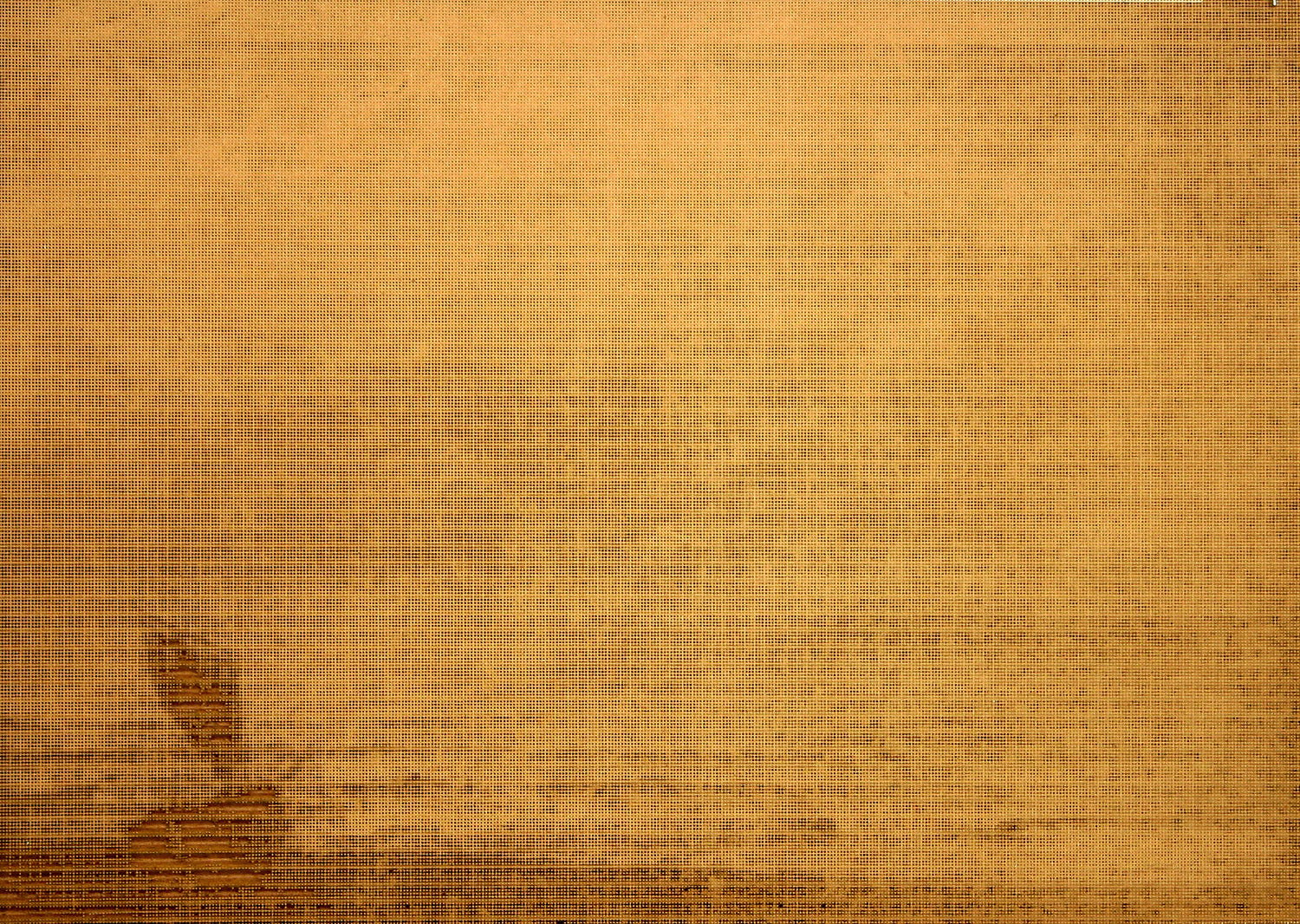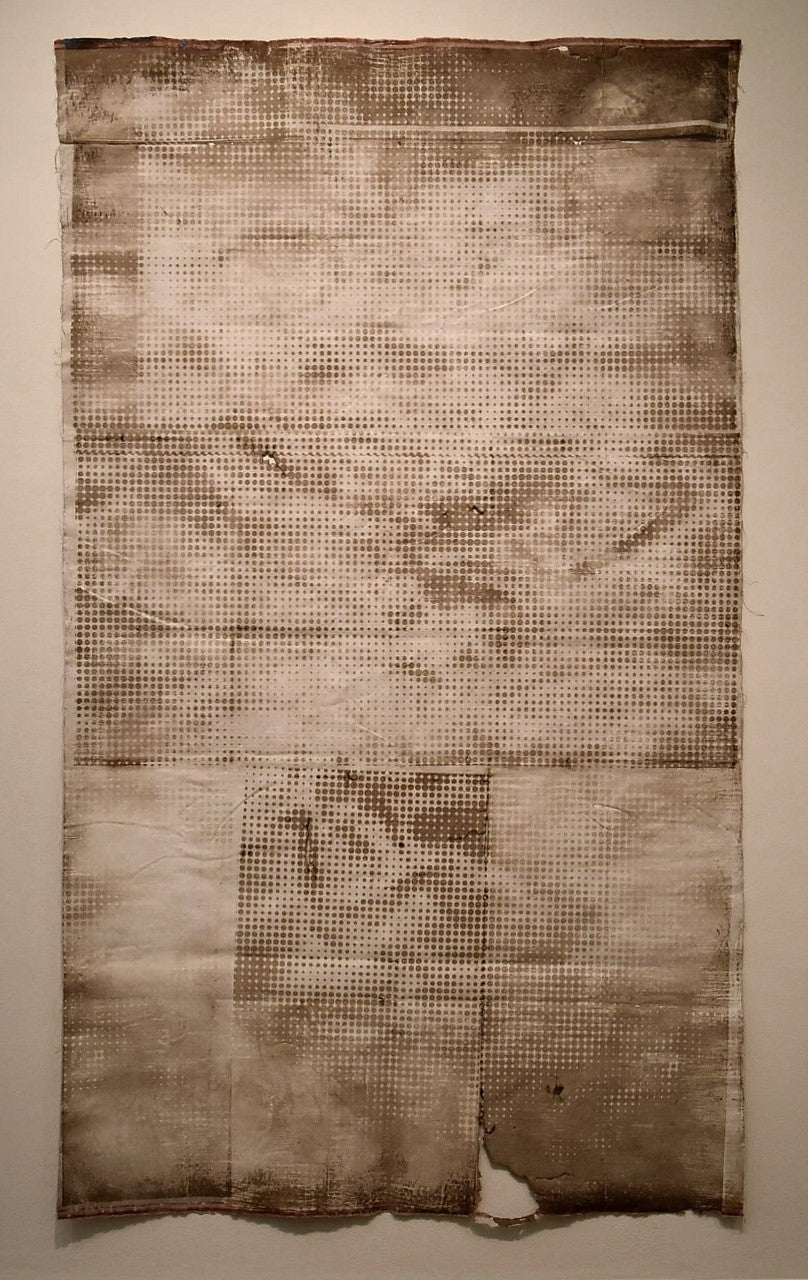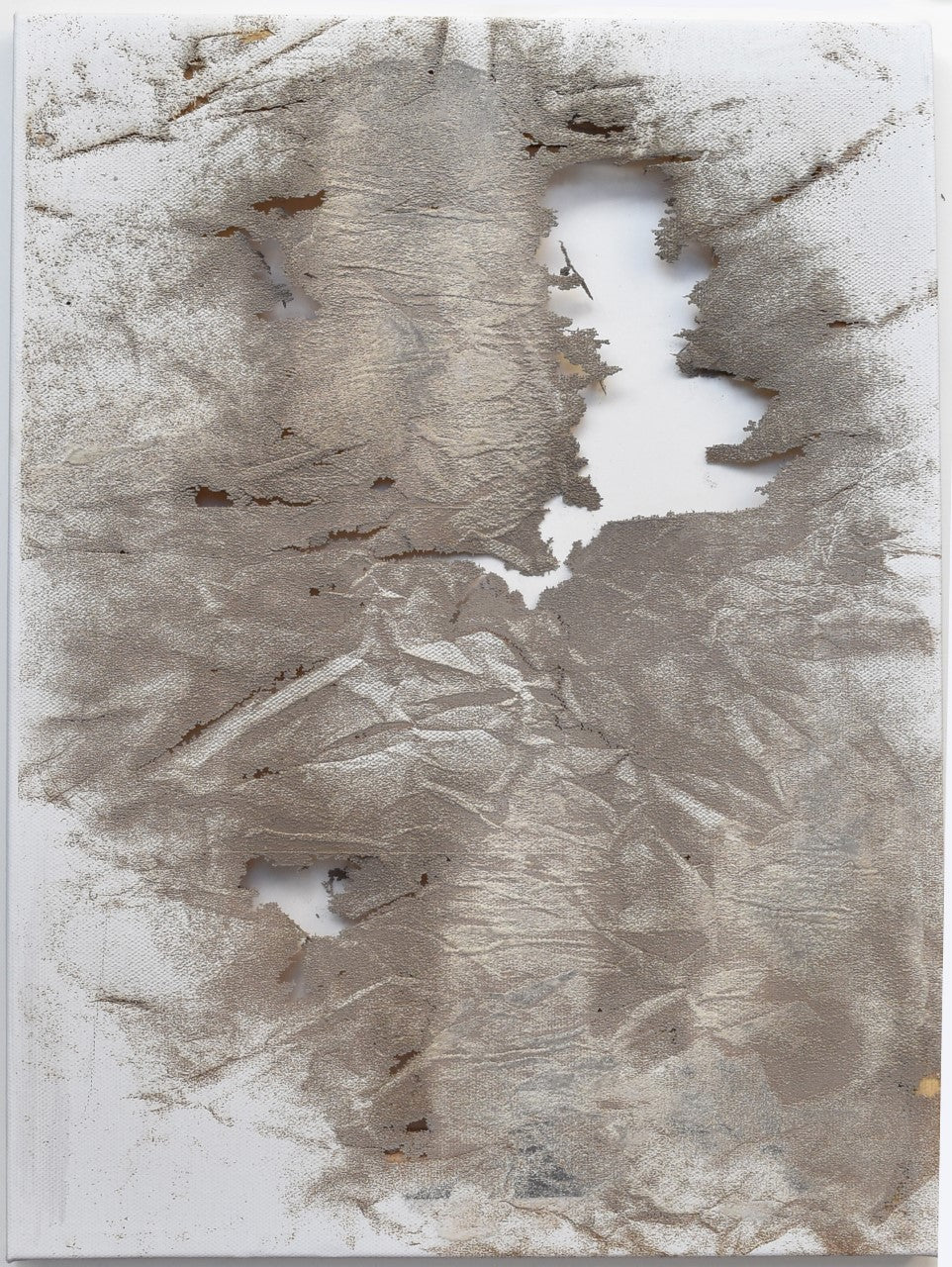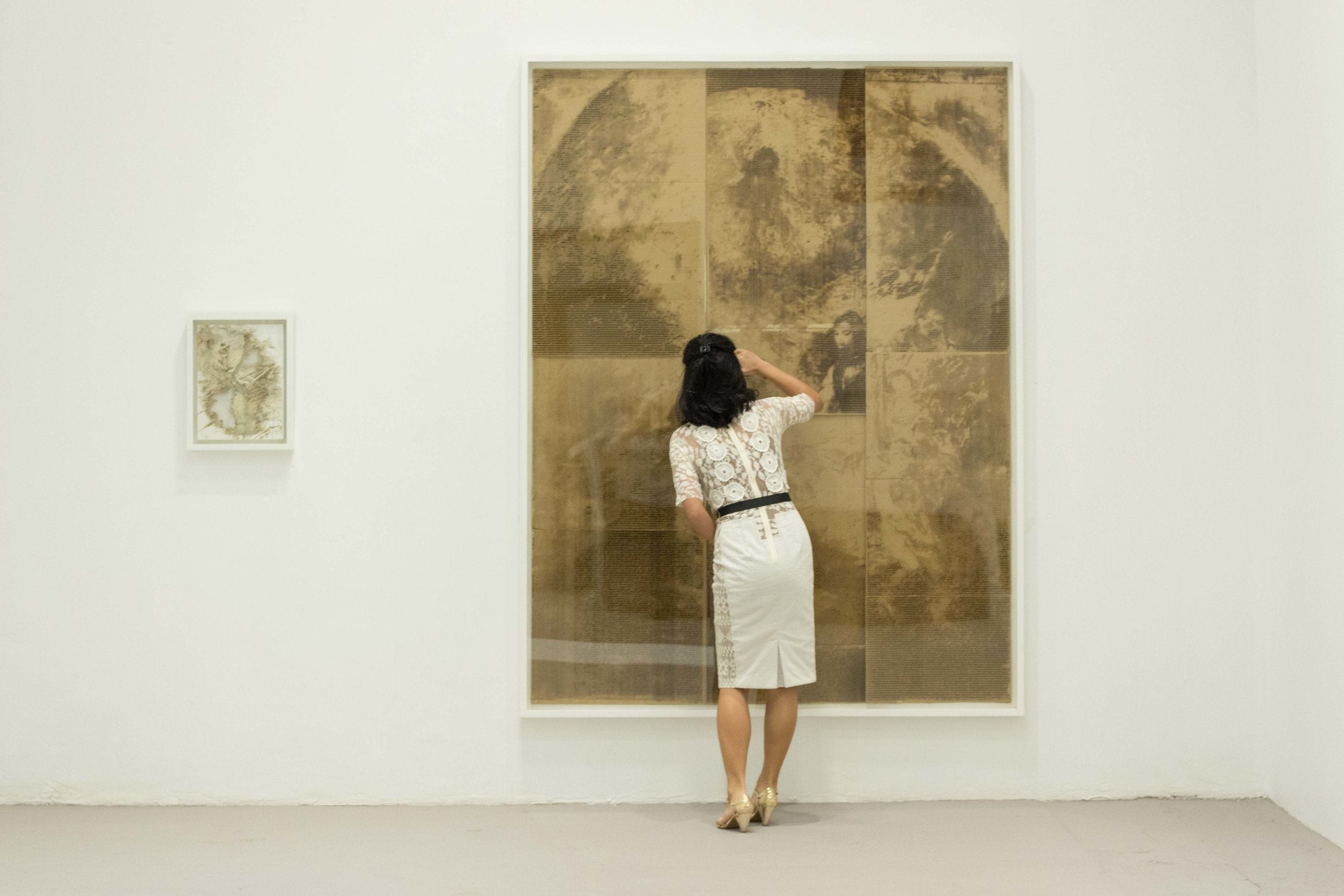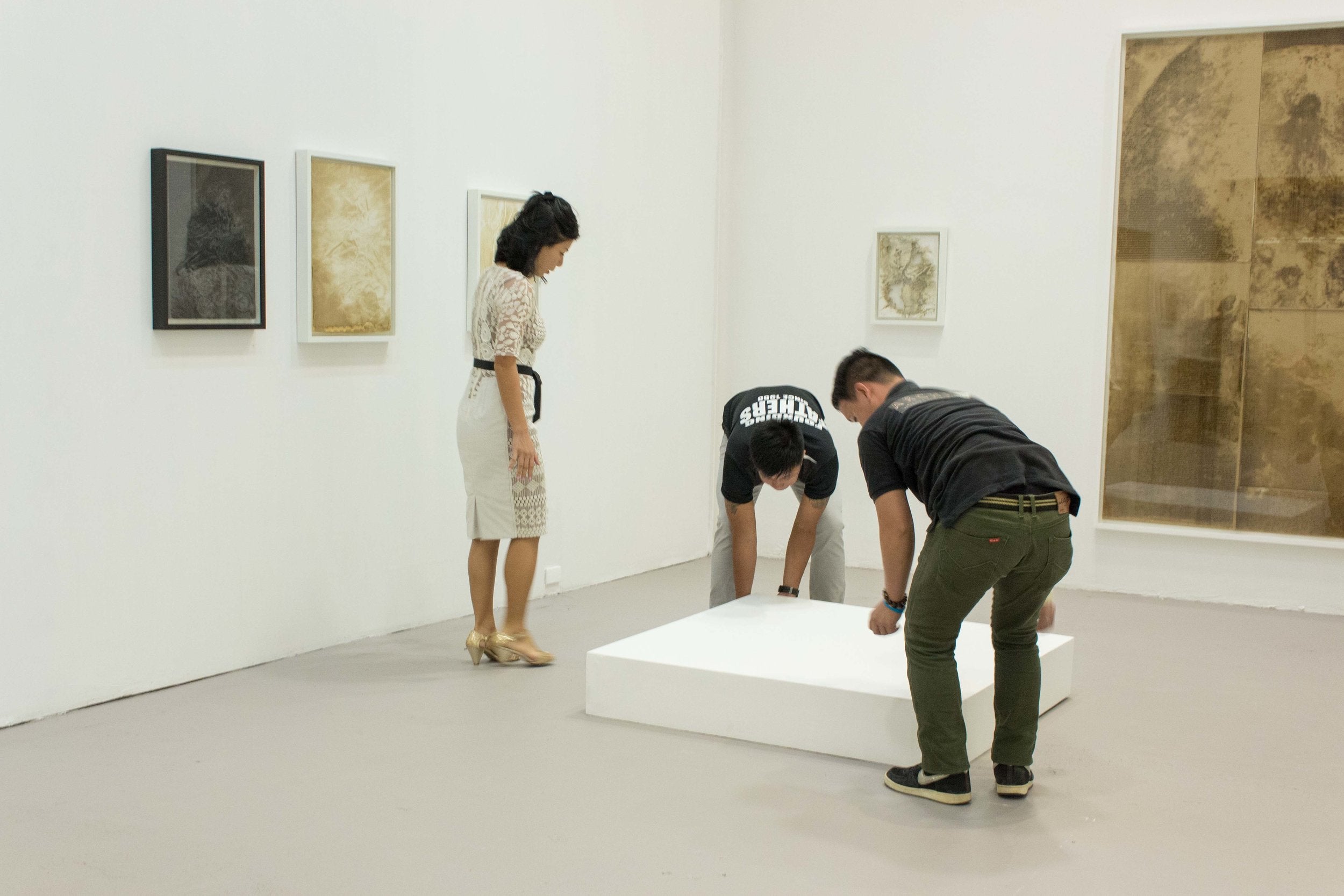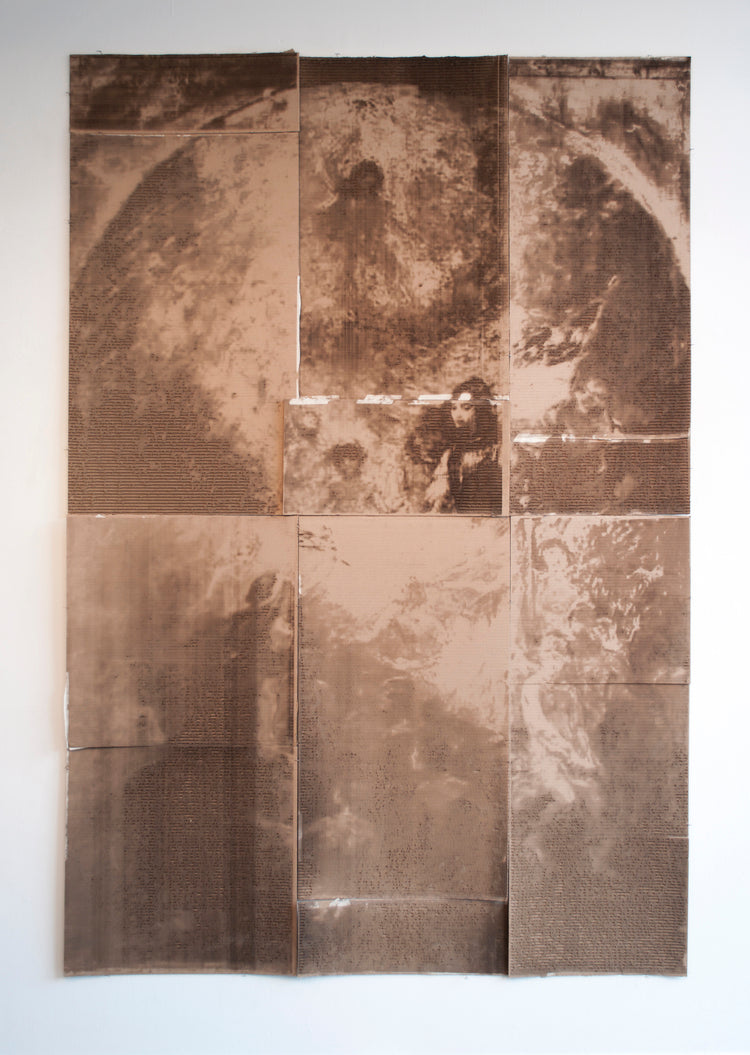The Past Is A Foreign Country

JILL PAZ
31 AUGUST - 20 SEPTEMBER 2017
-
Histories Intertwined
In her first solo exhibition in the Philippines, The Past Is A Foreign Country (2017), visual artist Jill Paz (b. 1982) enacts a homecoming that embraces the realms of both the intensely personal and the distant past. Through a series made from etched cardboard, wood and canvas, Paz revisits and reinterprets the body of works of the late 19th century Filipino painter Félix Resurrección Hidalgo (1855-1913), an enigmatic figure in Philippine art history and a great grand-uncle of hers.
Feted by Jose Rizal along with Juan Luna, Hidalgo lived and worked between the cusp of two colonial eras in the country. Both maestro and émigré, his achievements in major foreign expositions of 1884 and 1887 were connected to yet remained separate from nascent stirrings of patriotic reform against Spain’s colonial rule. During his lifetime, Hidalgo would move and work constantly between Europe and Manila, underscoring both the assimilation of influences and diasporic nature that have characterized the practice of many Filipino artists up to contemporary times. His extant works are now housed in institutional and private collections in the Philippines and abroad.
Paz’s ancestral homage, occurring more than a hundred years after Hidalgo’s passing, delves into the peregrine, unstable nature of the past: one that is not always encountered and apprehended as a complete and clearly-outlined narrative but as fragments, shards and recollections that one uncovers and chances upon. Images—and the impressions of such—outlive us all, and the artist defines her work as a renovation of such a past: interested in seeing where the restoration of particular histories and visions eventually lead to. Paz revisits her childhood years in New Manila in the early 1980s—in a pre-war family home filled with Hidalgo’s paintings and memorabilia—and a personal archive of the artist’s works accumulated later on in the course of studio art and history research in the United States as a means of finding one’s way around.
In this exploration of revisiting Hidalgo’s practice, Paz employs visual media and techniques still non-existent during the latter’s milieu, when the largely manual arts of painting and printmaking reigned supreme. Developed during the past two years (2015-16), the works in the show were produced using laser cutting technology which is widely used in modern fabrication studios of designers and industrial manufacturers: programming them to bore, etch and puncture delicate layers through wood, canvas and cardboard. The resulting images, based on Hidalgo’s paintings and impressionistic style, astound and fascinate in their delicacy of execution.
-
In a renowned speech in 1884, Rizal eloquently described Hidalgo’s works as “idealized expressions of melancholy…all light, color, harmony, feeling, limpidness.” These same ephemeral and fleeting qualities of transient form are captured and conveyed in Paz’s own series, which uses modern technology and the most elementary of materials to produce painterly images. Shedding off the gloss and minimalist precision of modernity, the resulting works are not “flawless, functional objects” meant for mass reproduction, but fragile and consciously imperfect approximations of Hidalgo’s history paintings, landscapes, seascapes and sketches.
In subverting the technological function of laser cutting, Paz observes how the “objectness of the paintings are vulnerable”. This choice of material and process also explores and reconsiders the connections and divisions made between the traditional media of painting and printmaking, producing contemporary work that integrates both forms of expression.
But Paz also brings us back to the diaspora and politics of the present, in the work Untitled (Balikbayan Box, It’s a Journey Back that I’m Always Taking). Immigrating to the U.S. in the mid-1980s, Paz recalls how the ubiquitous cardboard boxes—representing an entire economy shuttled back and forth across the country and abroad by courier firms—became symbols of the Philippines for those based on both sides of the Pacific. The resulting work reinstalls the balikbayan box as repository of memory—rid of all previous functionality, except to stand as witness to history and its unravellings.
The artist uses the term “prototype materiality” to capture a sense of the aesthetic strategies employed for this show. This term also aptly captures the risks associated with the act of renovation: to be open to the possibility that the past and its things can change, disperse or fall apart into total collapse. But when renovation and complete restoration of history is rendered impossible and quixotic, it may provide the opportune moment to create art that is steeped in life and the histories of the present.
- Lisa Ito

